June 2022 - You are accessing an old version of our website. The SDGs Voluntary Commitments have been migrated here: https://sdgs.un.org/partnerships
You will be redirected to the new Partnership Platform in 10 seconds.
June 2022 - You are accessing an old version of our website. The SDGs Voluntary Commitments have been migrated here: https://sdgs.un.org/partnerships
You will be redirected to the new Partnership Platform in 10 seconds.
The Indigenous Navigator is a framework and set of tools for and by indigenous peoples to systematically monitor the level of recognition and implementation of their rights. By using the Indigenous Navigator, indigenous organisations and communities, duty bearers, NGOs and journalists access free tools and resources based on community-generated data. The Indigenous Navigator monitors the implementation of: The UNDRIP; relevant International Human Rights conventions, including ILO Convention No. 169; Essential aspects of the SDGs; and Outcomes of the WCIP. The Navigator exposes important links between these frameworks enabling gap analysis by indigenous communities.
Overall objective: Contribute to improved human development and social inclusion of indigenous peoples in the context of implementing the 2030 Agenda for Sustainable Development by generating disaggregated indigenous community-generated data.
Specific objectives:
1. Key international development actors’ SDG programming and follow-up are responsive to indigenous peoples’ human development needs and aspirations, as reflected in UNDRIP and Convention No. 169.
2. Indigenous peoples’ development needs and aspirations, as reflected in UNDRIP and Convention No. 169, are addressed in the context of government and non-government actors’ national programming and monitoring in selected target countries.
The Indigenous Navigator Initiative consists of a series of interventions: a website, including the data portal and data collection tools, training and capacity building through participatory community workshops for local indigenous partners and on-site support for data collection, as well as building alliances with strategic partners at the national level. Building on and complementing these interventions, the objective of the project is to support the scaling-up of data collection as well as the design and preparation of knowledge products (reports, briefs, fact sheets etc.) on the situation of indigenous peoples, with the involvement and contributions of the communities concerned. These products will feed into country-level, regional and global advocacy and policy dialogues allowing indigenous peoples to engage with key development actors, both governmental, inter-governmental, and non-governmental.
Challenges:
● Uses of technologies applied in local context and user-friendliness for the end user
○ This included the redesign of the global portal; expanded technical and troubleshooting support for communities and national partners.
● Management of expectations towards the functionality of the tool
○ This was met by including clear communication, simple, clear language and focus on strengthening local capacity.
● Cultural sensitivity towards the definition of the targets of the SDG (poverty, gender violence, child labour).
○ Reformulation and adjustment of survey questions to meet community context. Design of survey framework and engine which allow for customisation.
● As this is the first tool to collect disaggregated data at a global level, an effective validation process that meets the contextual demands of the project and which takes into consideration the qualitative aspects of data, indigenous perspectives and bottom-up approaches has been a consistent challenge.
○ However, clear communication, discussions between consortium and national partners, and an open dialogue between all consortium members have helped to bridge these capacity gaps.
Target groups: Indigenous peoples’ organizations at local, national, regional levels; Development actors, including government, the HLPF, UN agencies, and CSOs. Final beneficiaries: Indigenous peoples and organisations. Respecting indigenous peoples’ rights enhances the development of greater advocacy tools enabling more inclusive and democratic societies & enhances local capacity. Methods of engagement: Through participatory workshops, community survey, rights sensitisation, training in data gathering & constructive dialogue with local & national governments, UN agencies and National Human Rights Institutions (NHRIs). Innovative partnerships: The global partnership is innovative by bringing together local & regional indigenous organisations from three continents, NHRIs, INGOs & the IPMG.
The activity has been applied in the eleven partner countries: Tanzania, Kenya, Philippines, Cameroon, Nepal, Cambodia, Surinam, Bolivia, Peru, Colombia and Bangladesh. Each country has national partners which, after being trained, have conducted the necessary sensitisation, outreach, and mobilisation of local Indigenous communities to participate in rights sensitisation, data collection/survey and the reporting process (Pillar 1). These surveys have been analysed and uploaded into the global portal, allowing for aggregation and comparison of the data. The data has been returned and is being used to guide and formulate advocacy materials, and reports to close the implementation gap between UNDRIP, ILO 169, and SDG adoption and implementation (Pillar 2). A small grants facility has been designed and is operating to support local community proposals based on the analysed data from Pillar 1 and 2.
The national and local levels are crucial for (1) securing collection of quality data that forms the basis for the development of documentation and advocacy materials feeding into national and global processes (2) supporting actions by communities to address immediate challenges. In the initial phase, integrated country strategies and action plans – based on situation and stakeholder analysis – were developed for each target country. Each target country appointed representatives which formed a global coordination team consisting of ILO and national lead partners. This team reports to the Steering Committee of the action. Based on thematic priorities and needs, country-level outputs include information briefs, reports, case studies and reports which rely on Navigator data and form part of the monitoring mechanism. The Consortium of partners, represented at the global level by the coordination team, are responsible for monitoring, supporting and ensuring that timebound milestones are kept, and that the action remains on track.
● The participation of indigenous communities in data collection has been very strong. Often, indigenous communities were informed for the first time about their rights through the tools. The project provided a rare and new space for indigenous women to get together as actors rather than by bystanders, helping to leave no one behind.
● National human rights institutions and regional mechanisms have shown a great appetite for understanding and mastering the tools to make the SDGs a reality for indigenous peoples.
● The Indigenous Navigator has contributed to filling gaps in the absence of official statistics and also suppliers of statistical data are engaging with the initiative, especially in Peru, Philippines, Suriname and Tanzania. Partners have already been reaching out to national government counterparts, this includes the examples of National Bureaus of Statistics in Bangladesh, Kenya, Peru and Tanzania.
● Indigenous peoples, their networks and organisations have increased their capacity to monitor their rights and advocate to close the implementation gap.
● High level of engagement with the UN HLPF and other international development actors.
Quantitative results: Data disaggregated by ethnicity is collected and stored and used to promote indigenous peoples rights in development (100 community-generated surveys, over 200 indigenous communities engaged in data collection, 66 data-driven pilot projects drafted, 102 workshops and training in 11 countries).
Qualitative: Increased awareness of how to use data to make stronger cases and affect policy making; constructive dialogues on issues concerning indigenous peoples in development with key stakeholders on the SDGs. IPs empowered through new alliances and enhanced participation. Duty bearers/development actors know and use the Navigator framework and data
Long-term results: National laws, policies and development programmes are responsive to indigenous peoples’ rights and needs and their human development improved by having a tool that empowers them to monitor the implementation of their rights.
These results and outputs have also been recognised by an independent external evaluation conducted in 2018 and by the EU in 2019.
Enabling factors: UN call for disaggregated data, support for the Indigenous Navigator framework by the UNPFII, EU engagement with and support for indigenous peoples’ rights, strong leadership from IPMG to coordinate campaigns and advocacy efforts at a global level (enabling strong presence at HLPF). Strong and mobilized previous consolidated network and alliances that enable trust and engagement with the innovative approach. DIHR provision of technical knowledge on the blueprint of the matrix enabling the generation of indicators to assess and monitor the implementation of indigenous peoples’ rights, flexible project design and collaboration between ILO and the European Union. Specific constraints that needed to be overcome and how this was done: access to digital technologies, and sensitization/outreach to remote areas where indigenous communities live and to indigenous peoples organizations and networks were a challenge. As was communication and support provision to these communities and local partners. Digital literacy was especially problematic at all levels of the project. This was overcome by leveraging financing and capacity support to national partners to ensure they could reach these communities and activate them to participate in the practice. Ideas/technologies/ways of thinking that it was able to leverage: mobile technologies, interactive mapping and identification of linkages and synergies building between the UNDRIP, Convention No. 169, the SDGs, and the WCIP documents. This allowed for deeper guidance and contextualisation to the survey process, which brought (through technology) access and sensitization of rights and international human rights framework to indigenous communities, often for the first time. Interactive design and deeper linking within the survey engine also allowed for the implementation of a global portal which allowed for survey upload and automated analysis in three working languages (Spanish, English and French) overcoming linguistic barriers.
The action has a high level of replicability, given the fact the tools, surveys, and guidance documents are freely available to public users, as monitoring but also planning tools for indigenous organizations. The data and information generated by the project, and the related advocacy and dialogue initiatives, are expected to fill gaps and lack of disaggregated data on indigenous peoples that have been identified as important needs by the majority of governments of the pilot countries. On this basis, the project and the use of the Indigenous Navigator beyond the project duration is expected to influence each country’s medium and longer-term development strategies and policies, and their implementation, in a manner that is more inclusive and reflective of indigenous peoples rights , conditions and development needs. The data and knowledge generated by the project will be available to target groups but also widely disseminated to policy-makers and actors in the development process more generally. The outputs of the project will reinforce the continuing enhancement of the Indigenous Navigator framework, the global web portal and the Navigator’s use by increasing the number of indigenous communities, researcher and development practitioners. In addition, indigenous peoples’ communities are particularly affected by the effects of climate change while they also play an important role in the context of climate change adaptation and mitigation. By raising the visibility of indigenous peoples and their role in the fight against climate change in public policy making and by contributing to securing indigenous peoples’ livelihoods, traditional occupations and improved socio-economic conditions and sustainable economic activities, the project will contribute to national and global efforts on climate change.
The Indigenous Navigator project has created meaningful impact with regard to enhancing indigenous communities access to, knowledge of, and advocative capacity on their rights. It has enhanced the working relationships, local capacities, and availability of tools/resources for partner organisations, including the consortium partners including the Danish Institute for Human Rights, the ILO, IWGIA, AIPP, FPP, Tebtebba Foundation, and their respective national partners. In 2018 alone, over 200 communities engaged in data collection, which built upon training in data survey and sensitization on their human rights within each local context. 106 workshops were held in 11 countries, and 49 data-driven projects were drafted. Further, more than 120 community-generated surveys are being implemented by local partners, with 92 validated and published as of 15-1-19. The combination of rights sensitization, often for the first time, with local capacity building, data capture, ownership, and innovative cooperation linked by an online data portal and resource hub provided a novel practice. Additionally, the gender inclusivity of the project and its focus on local communities ownership of the data collection process allows for a rare opportunity to engage with indigenous women and provide a platform for their voice and perspectives.
Consortium partners have engaged with the Indigenous Peoples’ Major Group of the HLPF, increasing their visibility, communication networks, and agency at the international and global levels. Major lesson learned:Digital literacy and technical challenges in implementing ICT4D solutions in the field remained a key challenge, and lessons learned included revision and re-design of the digital tool, contextualization of survey design to local communities, and stronger technical support. It has proven possible for diverse partners operating in a variety of complex contexts have been able to combine their knowledge, specializations and resources to work across an array of countries and with a very diverse group of beneficiaries to inspire change. These conclusions form a preliminary assessment, as the project is still ongoing.
Website: www.indigenousnavigator.com
https://nav.indigenousnavigator.com/index.php/en/
Data Portal:
https://nav.indigenousnavigator.com/1.3/project/navigator/index.php?tab=1-1-2-1-2
Info brochure:
https://nav.indigenousnavigator.com/images/Documents/About/Presskit/Info_brochure_Navigator_2017_web.pdf
Comparative matrices on Data and rights:
https://navigator.humanrights.dk/
Indicator frameworks:
http://nav.indigenousnavigator.com/index.php/en/tools/indicators
Press Kit:
http://nav.indigenousnavigator.com/images/Documents/About/Presskit/Final_Press_Kit_Indigenous_Navigator.pdf
Partner news articles and updates:
http://nav.indigenousnavigator.com/index.php/en/news
http://nav.indigenousnavigator.com/images/Press/27-april-2017-press-release-making-the-sdgs-work-for-Indigenous-peoples.pdf
https://ec.europa.eu/europeaid/news-and-events/navigating-indigenous-views_en


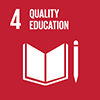
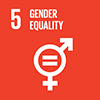
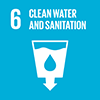

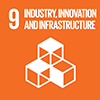
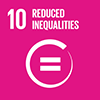



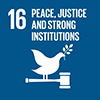
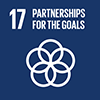
 Start: 01 February, 2017
Start: 01 February, 2017 Completion: 31 December, 2021
Completion: 31 December, 2021